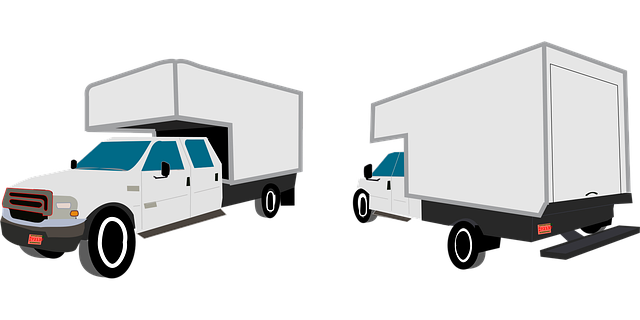Looking to register your car in California? This comprehensive guide walks you through the step-by-step process, ensuring a smooth experience. From understanding eligibility requirements and gathering essential documents to completing DMV vehicle identification number (DMV VIN) verification and paying registration fees, we cover it all. By following these clear instructions, you’ll be on your way to becoming a California car owner in no time.
- Understand Eligibility Requirements for Registration
- Gather Necessary Documents for Car Registration
- Perform DMV Vehicle Identification Number (VIN) Verification
- Complete and Submit Application Forms to DMV
- Pay Car Registration Fees and Obtain License Plate
Understand Eligibility Requirements for Registration

Before you begin the registration process, it’s crucial to understand the eligibility requirements set by the California Department of Motor Vehicles (DMV). To register your car in California, your vehicle must meet certain criteria. One essential step is ensuring that your car has passed a safe and legal inspection, which often involves a vin inspection or dmv vin verification. This process checks for any outstanding issues with the vehicle’s title, registration, and safety features.
Additionally, you’ll need to verify the Vehicle Identification Number (VIN) of your car. This unique code can be easily checked through various methods, including a mobile vin verification or mobile vin inspection, which allows you to confirm your car’s authenticity and history remotely. By fulfilling these requirements, you’ll be well on your way to completing the car registration process smoothly and efficiently.
Gather Necessary Documents for Car Registration

Before you begin the registration process, ensure you have all the essential documents ready. The California Department of Motor Vehicles (DMV) requires specific paperwork for a successful car registration, including proof of ownership and identification. One crucial step is to undergo a DMV VIN verification, where the unique vehicle identification number (VIN) is cross-referenced to ensure its authenticity and history. This process can often be done online or through a mobile VIN inspection service, making it more convenient than ever.
Additionally, gather your driver’s license or state ID, proof of insurance, and the title document if you’re the original owner. If you’ve recently purchased the vehicle, the seller should provide a bill of sale or a completed DMV form 190, which transfers ownership. Having these documents readily available will streamline the registration procedure and help avoid any potential delays.
Perform DMV Vehicle Identification Number (VIN) Verification

Before registering your car in California, it’s crucial to perform a DMV Vehicle Identification Number (VIN) verification. This process ensures that the vehicle matches the details provided on the registration paperwork and helps prevent fraud. The California Department of Motor Vehicles (DMV) offers both online and in-person methods for VIN verification. If you opt for a mobile vin inspection, a certified inspector can visit your location to perform the check, making it more convenient for busy individuals or those with limited mobility.
During the verification, the DMV will cross-reference the VIN with their records to confirm the vehicle’s history, including any previous owners, accidents, or outstanding issues. This step is essential as it ensures you’re complying with California’s registration requirements and helps maintain the integrity of the state’s vehicle record system. Remember that a valid and accurate VIN is critical for a smooth car registration process.
Complete and Submit Application Forms to DMV

To register your car in California, one of the crucial steps is to complete and submit application forms to the Department of Motor Vehicles (DMV). This process typically involves several key documents and forms, ensuring all information is accurate and up-to-date. Start by gathering essential materials like proof of ownership, vehicle identification number (VIN) verification, and any necessary registration fees. The DMV offers both online and in-person submission options, but it’s recommended to fill out the forms correctly before attempting a mobile vin inspection or visiting a local office for a vin inspection.
When submitting your application, remember that the DMV conducts a VIN verification process to ensure the vehicle’s identity and history match the provided information. This step is essential in maintaining California’s record-keeping integrity. Properly completed forms, along with accurate data from a reliable mobile vin verifier or local inspection, will streamline the registration process and prevent any potential delays or issues down the road.
Pay Car Registration Fees and Obtain License Plate

After completing your car’s registration application at the California DMV, the next step is to pay the required fees. These include the registration fee and a vehicle classification fee based on your car’s emissions level. You can typically make this payment online or in-person at a DMV field office. Once your payment is processed, you’ll receive your Certificate of Registration, which authorizes you to operate your vehicle legally on California roads.
With your new registration in hand, it’s time to obtain license plates for your car. In California, these plates are typically issued based on the vehicle’s make and model. You can request them at a DMV office or, more conveniently, have them delivered to your home through the DMV’s online services. Ensure that your license plates are securely attached to your vehicle, as they serve as both identification and proof of registration. Remember, proper display of license plates is crucial for avoiding fines and legal issues during dmv vin verification processes like a mobile vin inspection or in-person vin inspection.
Registering a car in California involves understanding eligibility requirements, gathering essential documents, completing a DMV VIN verification, submitting application forms, and paying registration fees. By adhering to these steps and ensuring accurate documentation, you can successfully navigate the process, making your vehicle legal on California roads. Don’t forget to utilize the convenient dmv vin verification service for a seamless experience.
